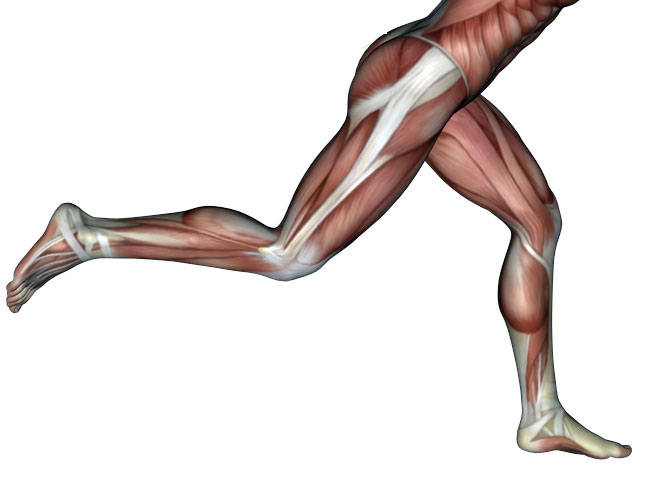New Insights into Frozen Shoulder Pathology: The Connection between the Brain and the Immune System
Frozen shoulder, or adhesive capsulitis, is characterized by inflammation and fibrotic processes in the shoulder, leading to stiffness, pain, and limited mobility. The condition can persist for over a year, with only 60% of individuals regaining motion, while 40% develop chronic limitations.
Various studies have linked frozen shoulder to psychological factors, obesity, diabetes, and even genetic predispositions. However, the etiology of frozen shoulder remains partially understood, contributing to diverse treatment success rates and emphasizing the importance of primary prevention and a better understanding of underlying mechanisms.
In a recent literature review by Santiago Navarro-Ledesma, Leo Pruimboom and colleagues from the University of Granada shed new light on frozen shoulder origins. The review delves into the epidemiology and pathogenesis of the disease, exploring how chronic low-grade inflammation, infection, and insulin resistance could play critical roles.
This new perspective suggests that the same pathophysiological processes that trigger type 1 diabetes and certain autoimmune disorders might also lead to frozen shoulder.
Epidemiology
Frozen shoulder (FS), affecting 2%-5% of the population, primarily afflicts women between 40 and 60 years old. Its exact causes are unclear, but risk factors include diabetes—particularly type 1 diabetes—Dupuytren’s syndrome, surgeries related to heart and neck, Parkinson’s disease, smoking, thyroid diseases, and chronic regional pain syndrome.
Diabetic individuals experience a 10%-36% higher incidence of FS, likely due to poor glucose control leading to fibrotic and inflammatory changes in joint collagen. Studies suggest that chronic hyperglycemia may facilitate the production of advanced glycation end products, promoting collagen cross-linking and fibrosis. Additionally, FS may share pathophysiological mechanisms with autoimmune diseases, possibly influenced by autoimmune responses against specific neural enzymes linked to the nervous system’s functioning.
An intriguing hypothesis proposed in the study is the involvement of the GABAergic system, which is crucial for regulating nerve activity. This connection emerges particularly in the context of autoimmune reactions where antibodies, such as those against the enzyme GAD65 involved in GABA synthesis, may disrupt its production, leading to potential muscular and connective tissue dysfunctions typical of FS. Stress and emotional disturbances can also alter the GABAergic system, influencing GABA receptor function and synthesis, which could exacerbate FS’s inflammatory and autoimmune responses.
The notion that similar pathophysiological mechanisms underpin FS and other GABA-related disorders, like diabetes and certain thyroid conditions, suggests that FS might also involve neurogenic inflammation, where nervous system irregularities provoke peripheral inflammatory responses.
Pathophysiology
The pathophysiology of Frozen Shoulder includes stiffness, pain, and limited range of motion. The condition is associated with the accumulation of advanced glycation end products (AGEs) in the shoulder, which is linked to insulin resistance, compensatory hyperinsulinemia, chronic hypoxia, and endotoxemia. These factors could contribute to the disease’s progression.
Cytokines, particularly interleukin cytokine IL-1, play a crucial role in immune cell recruitment, cell proliferation, and tissue destruction, and are considered potential diagnostic markers for FS. Synovial biopsies from FS patients show activated mast cells, T and B lymphocytes, and other inflammatory mediators, highlighting the pro-inflammatory cytokines’ role in causing persistent capsular fibrosis and the subsequent development of FS.
The presence of fibroblasts and myofibroblasts, which maintain and contract the extracellular connective tissue matrix, further contributes to the symptoms by causing tissue contraction and interacting with immune cells through cytokines and growth factors, thereby exacerbating the condition.
Low grade inflammation and subclinical infection
Modern lifestyles, particularly high calorie intake, sedentary habits, and environmental stressors could contribute to low-grade inflammation (LGI), which contribute to various health issues including frozen shoulder.
These factors lead to chronic stress, which activates the immune system and produces pro-inflammatory states through elevated levels of LDL and uric acid.
Chronic stress and inflammation increase the permeability of various bodily barriers, potentially resulting in systemic inflammation that affects multiple organs. Thus the use of NSAIDs for treating frozen shoulder they might impede natural inflammatory resolution and contribute to chronic pain.
Proposed interventions for frozen shoulder
Current treatment approaches for Frozen Shoulder primarily rely on surgical and non-surgical methods based on expert opinion rather than quantitative research.
The authors suggest protocols focusing on diet and innovative therapies. Treatment should include nutritional approaches, emphasizing the modification of lipid intake and the use of probiotics to manage inflammation and microbiome disturbances. Lactoferrin is also recommended for its antimicrobial and anti-inflammatory properties.
The authors suggest therapeutic hypercapnia, which involves increasing CO2 levels in the bloodstream through controlled breathing techniques to potentially manage diet-related behaviors and immune system activity. This method, inspired by the environmental conditions of the naked mole rat, shows promising effects in rodents and could be beneficial for humans if proven effective. This integrative, patient-controlled approach aims to leverage the body’s natural responses to manage FS symptoms and underlying causes effectively.
Summary
This study presents an integrative perspective on the pathology of Frozen Shoulder (FS), linking it with autoimmune diseases such as type 1 diabetes, Hashimoto’s syndrome, and Dupuytren’s contracture, particularly highlighting shared mechanisms like low-grade inflammation and metabolic disturbances. It also suggests that psychological stressors like fear, anxiety, and depression, which impact the GABA-ergic nervous system, may exacerbate these conditions.
The increased incidence of these diseases during the COVID-19 pandemic further supports the hypothesis of a neuroimmune linkage in their development. A small study indicated significant improvement in FS through treatments targeting the central nervous system, suggesting a possible neurogenic component to FS.
The review proposes that FS may have an autoimmune basis, where immune challenges combined with psycho-emotional stress could prime immune cells against super-autoantigens present in both the brain and peripheral tissues. This model suggests that T effector cells activated in this manner could potentially attack various body tissues, implying a broader neuroimmune interaction underlying FS and similar autoimmune conditions.
Comment by Dr Robert Schleip
Robert Schleip, commented that:
I find this research paper very inspiring and clinically relevant. It originates from a group of researchers led by Leo Pruimboom, a Dutch physiologist and the founder of a novel approach related to fostering human health called clinical psychoneuroimmunology. The comprehensive exploration in this article describes various predisposing factors for frozen shoulder, including chronic psychosocial stress and other lifestyle factors such as unhealthy nutrition, sleep dysfunction, and lack of movement.
Frozen shoulder primarily manifests as a fibrotic contracture of the collagenous fibrous elements of the shoulder joint and is most commonly observed in women aged between 40 and 60 years in our society. The proposed involvement of the GABAergic neuronal pathways in this fascial pathology, as described by these researchers, could indeed offer a previously underestimated contributing factor, shared with several other health dysfunctions characterized by a combination of chronic psychoemotional stress and immune system dysregulation.
In the realm of fascia research, the investigation of fascial parameters as a dynamic mediator between the autonomous nervous system and immune regulation has emerged as a new and fascinating focus of attention. Almost every month, new studies reveal novel pathways for this intimate interaction. It is likely that several other myofascial dysfunctions, such as the numerous cases of low back pain associated with adhesive changes in the thoracolumbar fascia, fibromyalgia, or tension-type headaches, may exhibit similar features to those described for frozen shoulder in this excellent paper. If so, the coming years promise to be dynamic for clinicians following the advances in this promising field.


